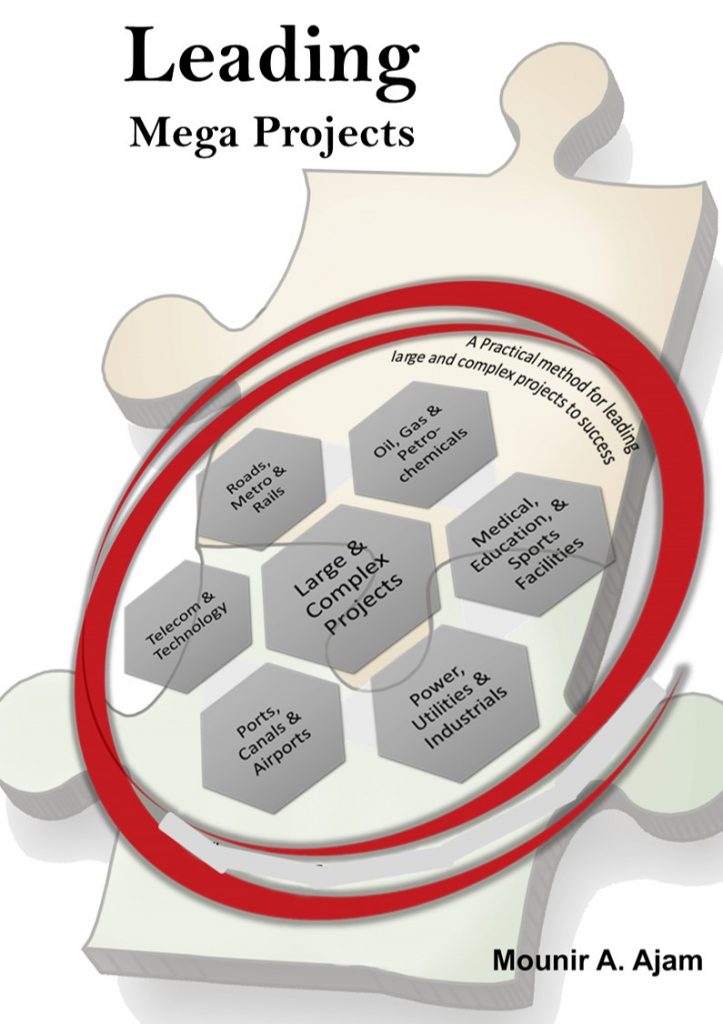We define megaprojects as massive projects with capital cost around US$1 billion and a high level of complexity. Industrial megaprojects seem to perform better than infrastructure megaprojects. However, at best, what we have seen reported is 35% success rate on the high end and as low as 0.5% on the other end. We do question the 0.5%, although it is reported by a reputable source. Then, the challenge is on finding a tailored approach for leading megaprojects and since we have such an approach, it makes sense to write about it.
One perspective
Over the last few decades, the field of project management has seen significant growth and acceptance across sectors, industries, and domains. Project management skills are in demand across organizational levels. There are numerous certifications in project management—may be more than fifty—offered by various professional associations and private companies. It would be safe to say that there are more than a few million practitioners with one project management certificate or another.
Megaprojects failure
Yet, we continue to see failed and challenged projects, regardless of industry, domain, size, or complexity. Failure of the low-cost project in large organizations could be tolerated. However, the failure of megaprojects could significantly impact the finances of organizations, private or public. Just imagine this: 10% overrun on a $1 billion project, which would be a small project among the mega class, would be $100 million. Can you imagine what companies, government, or humanity can do with $100 million? Once you are done imagining, can you even imagine if this number is 100 or 1000 times bigger?
Megaprojects as news items
Megaprojects can often be front page news and their reputation or legacy will last for decades. Therefore, this is a huge topic and with great interest, globally. There are many articles, academic papers and books discussing mega projects failures; some claiming only 1 project out of 1000 is successful, others are more optimistic and claim 5 out of 1000 (or 0.5%). Some of these claims could be designed to be attention grabbers, sensational or provocative, which would not be right, fair, or even ethical if misrepresented. Industrial megaprojects might be doing better than infrastructure projects and undergo more scrutiny, yet, they still do not do well or as well as they should be. Their performance is leaving billions of dollars in lost organizational value.
Status of current practice
In this book, we will reflect on the sad status of the practice and current relation but our attention is not to get stuck in a cycle of doom but to learn about the challenges, problems, mistakes, and bad practices. Knowing where we are being a crucial starting point to help us define where we want to go and how to close the huge divide between the current reality and a better future for us all.
Megaprojects, questions to ponder
In this preface, I want you to continue to think and ponder these questions:
- What are some of the challenges facing mega projects, what are the opportunities, and can we improve the state of the current practice?
- Is the organizational culture a factor and how does project management maturity contribute to the success or failure of projects?
- Should mega projects be treated as programs or should they be managed as an integrated component of asset management?
- Have we reached a state of practice where project owners are overwhelmed or intimidated by project management, leading them to outsource the management of their projects, even the large-complex and mega projects?
- Can project management consultants, working as a representative of the project owners, adequately represent the interest of these owners to deliver success?
- How about the type of contracts used, do they have a direct or indirect influence on projects?
- How about Agile development, is it the magic wand for capital projects like some Agile advocates are trying to convince us?
- Can we benefit from standardized project management systems, which could help organizations lead their projects from micro to mega projects? Or is it the perception that standardized processes, such as a stage-gate, project life cycle model, are perceived as outdated, bureaucratic, and ineffective?
- Some would say, “organizational systems, project life cycles, stage-gate process are already established, so, Mounir, what value can you add?” Sure, these things existed for decades but projects still fail at a high rate, why?
- How do we define success and what are the differences between success, failure, or challenged status of projects?

Closing
We could be asking many more questions, and we will in due time. However, for now, ten questions are a good limit. Take your time and try to answer the above questions, even speculate if you have to. Write down your thoughts and refer back to them as you read. Maybe we align, or maybe we will be challenging your conventional wisdom. We would be happy to hear from you, especially if you want to challenge what we present in this book.

Trackbacks/Pingbacks